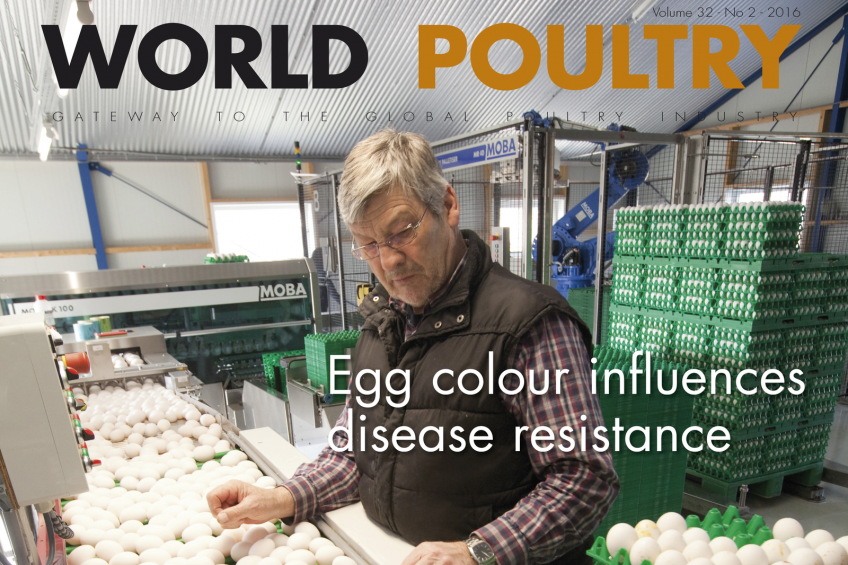World Poultry 2: Highlights health challenges

The 2nd edition of World Poultry 2016 is now online. The year has only just started, but for the poultry industry it has been a busy time and a lot has happened. Here are some of the highlights of this issue.
In this issue we look back at 2 major exhibitions, IPPE and VIV MEA. both which had an interesting programme and attracted many thousands of poultry professionals.
Poultry health with and without antibiotics were at centre stage, especially in the US, where the industry is gearing up towards the ban on the use of subtherapeutic antibiotics in 2017.
Disease resistance influenced by egg colour
In our main interview Tom Berghof from the genomics centre of Wageningen University shares his findings on the link between disease resistance of a parents offspring and egg shell colour. Ground-breaking work, with new insights.
Move from waterbath to CO2 stunning
In this issue also focusses on the processing industry as well. 2 big players, Marel Stork and Meijn comment on the move from waterbath stunning towards CO2 stunning. They see the system gaining worldwide interest due to societal demands on animal welfare and industry demand on meat quality.
Combatting Campylobacter
Within the meat quality theme Biomin comprised an article on combatting Campylobacter, especially in Europe. Research has found that an avian-specific probiotic could reduce the level of colonisation and shedding of Campylobacter jejuni challenged broilers reared to 42 days of age.

That said, a mixed approach with improved biosecurity, management practices, feed interventions and interventions in the processing plant are necessary to keep the bug under control.
Read our digital edition for these items and much more.
















